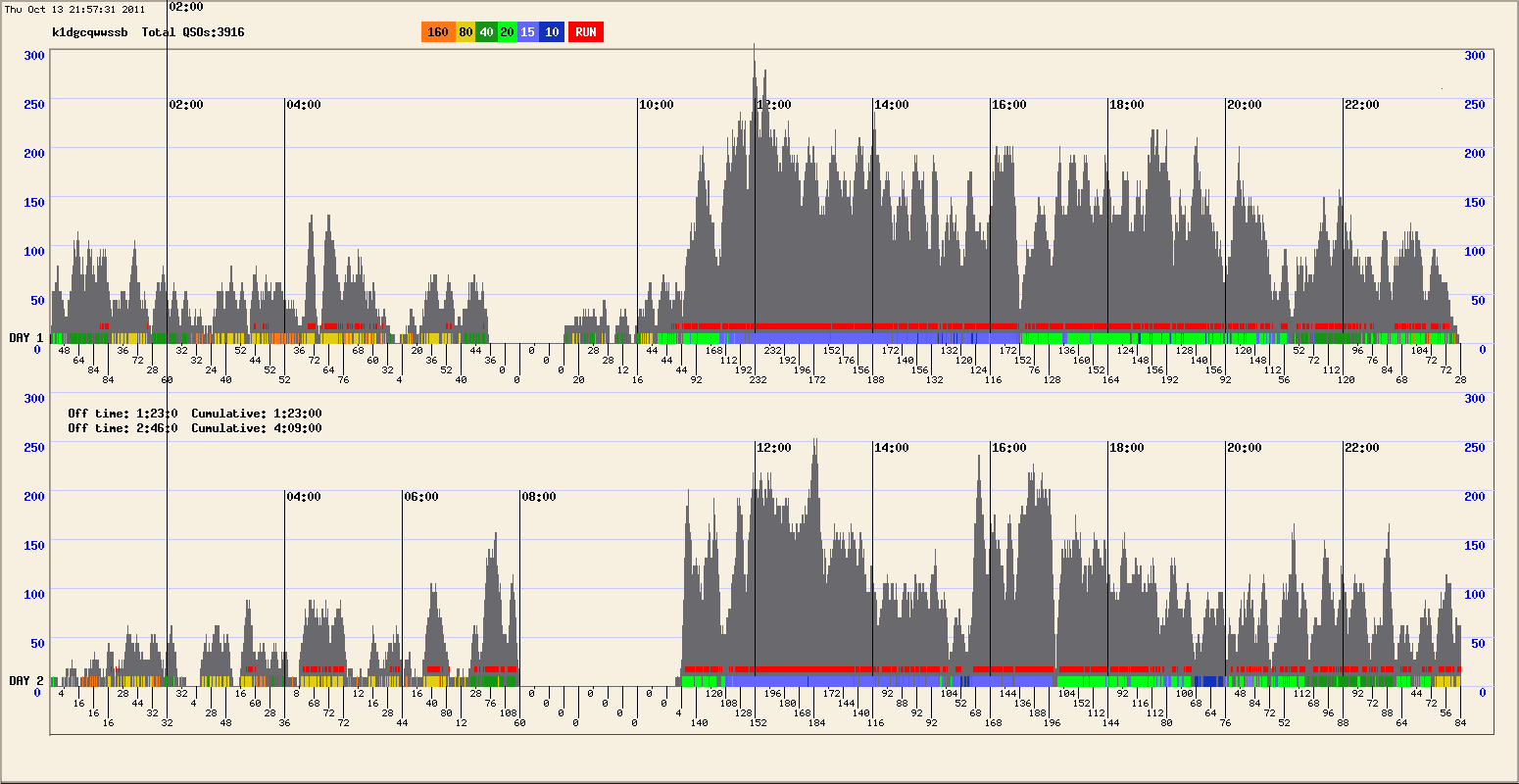
I like to experiment with writing programs that transform data into
useful visual tools, I guess because my eyes start to glaze over
when I stare at an overload of text information. That old saying,
"A picture is worth a thousand words" is really true for me, at least.
I am hopeful these pictures are self-explanatory.
In no particular order, here are some graphs of a sampling of stations
that scored well in CQWW SSB and a few thoughts that
come to my mind when I look at them:
For me, the above graph says 2 important things: The very best of
us stateside do more S&P than many of us might imagine, and when
it's time to run, they go with the "Money Bands", 15 and 20 meters.
In 2011, that might include 10 meters, too.
For me the message I get from K1LZ's non-stop Multi-Single effort
is "BIC" and NEVER get discouraged by slow moments.
Here's a highly productive Multi-two result, making the most of the
morning grey-line pipe-line and finding a way to extract QSOs in the bleakest
hours of early Sunday.
Another stellar M/M operation turned in by Dave and company-- further
proof that Saturday is the most important and productive day to be on...
So if you have to pick one day, Saturday might be best.
Randy's M/S effort includes a strong finish on Sunday, unlike many
others. Was it conditions, or the possibility that it would take 2 or 3
others combined to keep up the rate Randy would make if he were
at the mike & VFO(s)?
This Multi-Two performance would have palced second in M/M-- I suspect
more of this is RUN than the graph really shows, as it was designed for
single-operation log analysis. I'll have to consider a different
method to handle that... some of the rates are just phenomenal.
US Low-Power winner K1BX shows how you CAN run with 100w-- you just
have to do it when conditions favor it- use the highest band with the best
signal to noise ratio, and maybe leave running 20M for Sunday...
So there you have it-- who, what, where, when, and SOME of
the how. Knowing more of the station description might add to what these
graphs mean, and asking the participants some questions could be
enlightening, too. They were for me. -KA1IOR